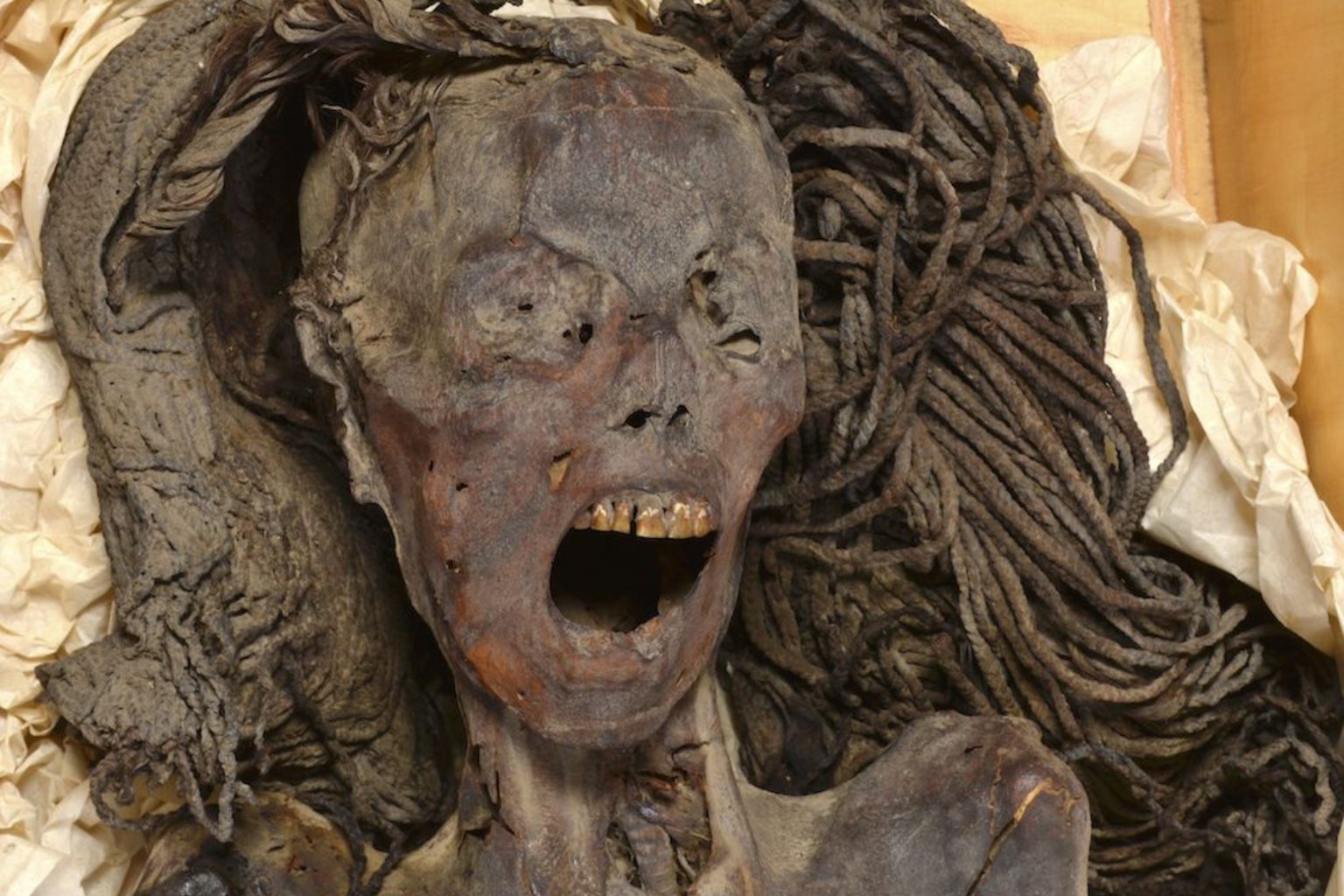In 1935, archaeologists excavating a tomb in Egypt’s Thebes necropolis unearthed the mummified remains of an elderly woman, known as the “Screaming Woman” due to her horrific expression with her mouth locked open in a scream of horror. A recent study conducted by researchers from Cairo University suggests that the woman did indeed die screaming in agony, contrary to the previous belief that her expression resulted from poor embalming techniques. The study involved CT scans and an analysis of the materials used in the embalming process, revealing the use of costly imported embalming materials and contradicting the belief that the lack of organ removal indicated a poorly mummified body.
The Screaming Woman mummy, formally known as “CIT8”, was discovered in the tomb of Senenmut at Deir el-Bahari during the Metropolitan Museum of New York’s 1935 expedition to Egypt. She was found in a wooden coffin buried with scarab rings and was ultimately transferred to the Cairo Egyptian Museum in 1998. The mummy remains in good condition, with no embalming incisions and internal organs left intact, which was a departure from the custom of removing organs during the embalming process in ancient Egypt. Analysis of the Screaming Woman’s remains revealed she was likely around 48 years old when she died and suffered from mild arthritis based on bone spurs found on her spine.
Chemical analysis of the Screaming Woman’s skin indicated the use of expensive imported materials such as frankincense and juniper in her embalming process, along with henna and juniper for coloring her natural hair. These findings suggest that embalming materials were traded in ancient Egypt, with references to the expedition led by Queen Hatshepsut that brought frankincense from Punt. The study also revealed that the woman’s two-part wig was made using fibers from the date palm treated with crystals of albite, magnetite, and quartz. This research sheds light on the trading of embalming materials in ancient Egypt and provides insight into the Screaming Woman’s appearance and lifestyle.
The theory proposed by radiologist Professor Sahar Saleem suggests that the Screaming Woman’s expression may be a result of a cadaveric spasm, indicating that she died screaming in agony or pain. Cadaveric spasms are a rare form of post-death muscle stiffening associated with extreme emotional or physical stress, occurring instantly and not easily loosened. This theory could explain why the woman’s mouth was left open, frozen in a silent scream, despite the embalmers’ efforts to close it. The study, published in the journal Frontiers in Medicine, presents the Screaming Woman as a unique “time capsule” revealing insights into her death and mummification process.
The analysis of the Screaming Woman’s remains showcases the meticulous embalming process she underwent, with the use of costly imported materials and sophisticated techniques for preservation. By studying her age, health conditions, and appearance, researchers have pieced together a clearer picture of her life and death in ancient Egypt. The study highlights the significance of the Screaming Woman mummy as a historical relic that offers valuable information about ancient embalming practices and the cultural beliefs surrounding death in Egypt. This research contributes to our understanding of ancient Egyptian customs and traditions related to death and burial practices.


